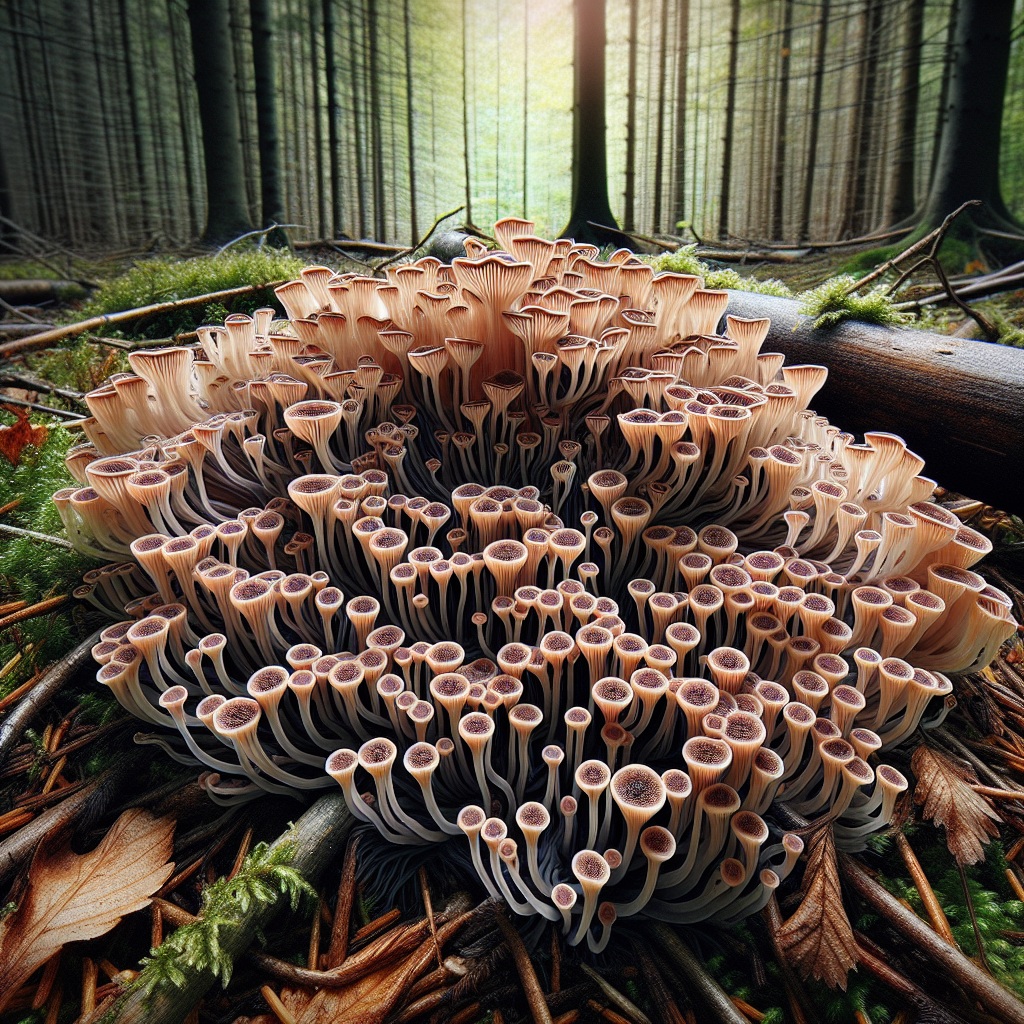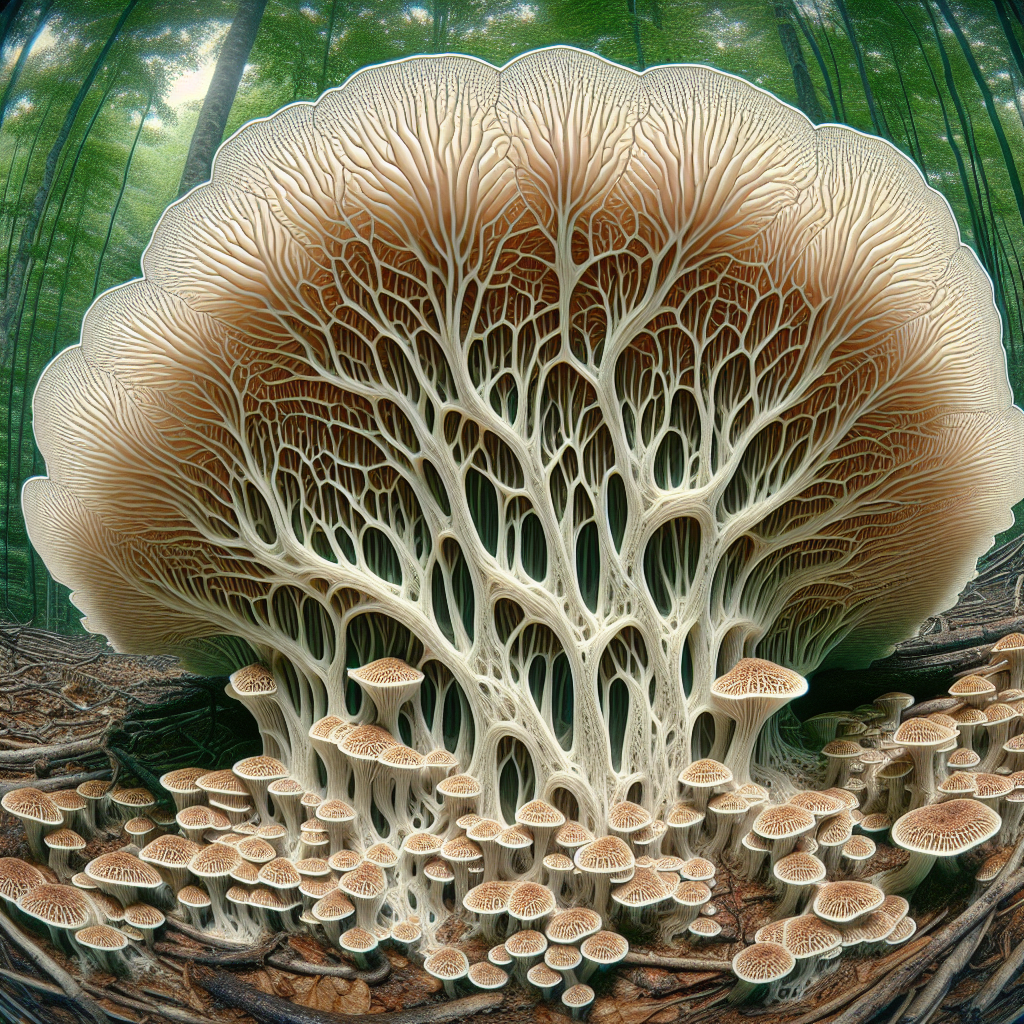The unseen underground network that fuels the lifecycle of a mushroom is a fascinating web known as Mycelium. In “Understanding the Mycelium of a Mushroom,” you will gain comprehensive insight into the crucial role this network plays in the overall ecosystem of the world. From facilitating the exchange of nutrients to its potential use in sustainable practices, the versatile mycelium is intriguingly explored through detailed scientific information and captivating discussions. Prepare yourself to not merely learn about mushrooms, but to peer into an unseen world that affects virtually every aspect of life on Earth.

Understanding Mycelium
As you explore the world of fungi and, more specifically, mushrooms, you will inevitably come across the term ‘mycelium’. Mycelium is an integral part of any fungal organism, including mushrooms. It serves as the foundation for the growth and development of the fungus.
Definition of Mycelium
Mycelium can be defined as the thread-like vegetative part of a fungus or fungal colony. It consists of a network of filaments known as hyphae, which grow through the substrate or surface in which the fungus is living and growing. This substrate may be soil, organic matter, or any other material capable of nourishing the fungus.
Importance of Mycelium in a Mushroom
Mycelium plays a crucial role in the life of a mushroom. It forms the base of the mushroom and facilitates its growth by absorbing nutrients from the environment. These nutrients are then transferred to the mushroom, often making them significantly larger and more complex than the visible part of the fungus that we commonly know as mushrooms.
Structure of Mycelium
Understanding the structure of mycelium is key to appreciating its role in the life cycle of a mushroom. It surrounds and penetrates the food source, absorbing nutrients and water, allowing the fungus to grow and reproduce.
Formation of Hyphae
Hyphae are the collective building blocks of the mycelium. They are tubular, thread-like structures that expand and extend into the mushroom’s environment to search for and absorb nutrients. They grow at their tips, which allows them to navigate towards specific nutrient sources.
Development of the Mycelial Network
The mycelial network is developed as the individual hyphae grow and branch, intervolving into an intricate web-like structure. This network is not just a simple expansion; it’s an adaptable and dynamic structure, capable of responding to various environmental conditions and stimuli.
Anatomy of Mycelium
In the anatomy of mycelium, you’ll find the hyphae are its primary building blocks. Each hypha is made of tubular cells stacked end to end, encased within a strong cell wall. These cells work in harmony to transport nutrients, allowing the fungus to grow.
Life Cycle of Mycelium
The life cycle of mycelium involves three main stages: growth and development, reproduction, and decline and death.
Growth and Development Stage
In the growth and development stage, mycelium increases in size and complexity. It expands in search of water and nutrients, essentially for the mushroom to thrive.
Reproduction Stage
During the reproduction stage, the mycelium prepares for and engages in the generation of spores, the primary agents of fungal dispersion. These spores are produced by the mushroom and are later released into the environment.
Decline and Death Stage
The decline and death stage occur when the mycelium has exhausted its food sources or the environmental conditions no longer support its growth. As the mycelium dies, it releases enzymes that decompose it, turning it back into the resources it once consumed.

Role of Mycelium in Nutrient Absorption
Mycelium is primarily responsible for acquiring the essential nutrients required for a mushroom’s growth.
Extraction of Nutrients from the Environment
Mycelium sustains itself by extracting a wide range of nutrients from its environment. It releases enzymes that break down organic matter, transforming complex molecules into simpler forms that can be absorbed through the hyphal walls.
Transfer of Nutrients to the Mushroom
The mycelium acts as a conduit, transporting the absorbed nutrients to the mushroom, thus allowing the mushroom’s structural development and growth.
Influence on the Overall Health of the Mushroom
In essence, the health of a mushroom is directly linked to the effectiveness of mycelium in performing its nutrient-absorption role. Without the mycelium, the mushroom could not obtain the nutrients necessary for its development and survival in the ecosystem.
Mycelium and Fungal Symbiosis
Mycelium forms symbiotic relationships with the roots of plants in its environment, bringing benefits to both partners in the relationship.
Role in Mutualistic Relationships
In these mutualistic relationships, the mycelium helps the plants by increasing their root surface area, thus aiding their absorption of water and minerals.
Interaction with Other Organisms
While mycelium feeds and sustains the mushroom, it also interacts and benefits other organisms. Its extensive mycelial network helps with the redistribution of essential nutrients, thus playing a vital role in the ecosystem’s balance.
Environmental Contributions
The mycelium’s role doesn’t stop at benefiting the individual mushroom or plant it’s associated with. Via decomposition of organic matter, it returns essential nutrients to the environment, contributing to the overall nutrient cycling that’s important for the functioning of ecosystems.
Role of Mycelium in Mushroom Reproduction
Mycelium plays a pivotal role in the complex process of mushroom reproduction, involving the formation, dispersal, and germination of spores.
Formation of Spores
As part of the fungal life cycle, the mycelium invests energy in the production of spores – microscopic particles designed for dispersal to a new and potentially more favorable location.
Spread of Spores
Once the spores are mature, they are released into the environment where they can be carried by the wind, water, or associated wildlife to new locations.
Germination and Formation of a New Mycelium Network
Upon reaching a suitable environment, the spores germinate. They then start forming a new mycelial network, thus initiating a new mushroom cycle.
Genetic Characteristics of Mycelium
Mycelium contains the genetic blueprints necessary for the fungus to adapt, evolve, and interact with its environment.
Genetic Diversity in Mycelium
Genetic diversity in mycelium contributes significantly to the overall resilience, adaptability, and longevity of fungi. They are capable of merging compatible mycelium to form a more diverse and robust mycelial network.
Adaption and Evolution of Mycelium
Mycelium is a dynamic and adaptable structure, capable of evolving in response to environmental changes. This adaptability greatly increases the survival rate of the fungus.
Interaction with the Mushroom Genome
The mycelium carries the genes of the mushroom. The interaction of these genes influences the characteristics of the resulting mushroom, affecting everything from its appearance to its ability to withstand different environmental conditions.
Role of Mycelium in Soil Health
Mycelium is a major contributor to the health of soils. It helps to decompose organic matter and plays a role in the structure formation of the soil.
Introduction to Soil Fungi
Soil fungi, of which mycelium is a key component, play a vital role in maintaining healthy soil. They help break down complex organic materials, leading to the release of nutrients that enrich the soil and promote plant growth.
Decomposition Process
The decomposition process carried out by mycelium is a key element in the cycling of nutrients in soil. Mycelium releases enzymes that break down complex organic matter into simpler fertility-enhancing substances.
Soil Aggregation and Structure Formation
Furthermore, mycelium helps form soil structure by binding soil particles together into aggregates. This improves the soil’s ability to retain water, nutrients, and air, thus making it more fertile and hospitable for plant life.
Potential Commercial Applications of Mycelium
The versatile characteristics of mycelium have led to its broad use in numerous industries – from pharmaceuticals to sustainable materials, to the food and beverage industry.
Mycelium in Pharmaceutical Industry
In the pharmaceutical industry, certain types of mycelium are cultivated to produce antibiotics and other important medicinal compounds. The natural healing properties and compounds found within some mushrooms can be attributed to their mycelial networks.
Mycelium as a Sustainable Material
In the realm of sustainable materials, mycelium is being explored as a biodegradable alternative to plastics and other materials. It’s also being used in construction and packaging, thanks to its remarkable insulation properties.
Food and Beverage Industry Uses
In the food and beverage industry, some forms of mycelium are used as a protein-rich food source or to ferment products like beer and wine. Additionally, it’s being studied for its prebiotic properties that may benefit gut health.
Threats and Conditions Affecting Mycelium Growth
Despite its advantageous attributes, there are several threats and unfavorable conditions that can hinder or prevent mycelium growth.
Environmental Factors
environmental conditions such as temperature, moisture, and light can significantly influence the rate and direction of mycelial growth. Abrupt changes or extreme conditions can be harmful or even fatal to mycelium.
Human Activities
Human activities like deforestation, pollution, and improper agricultural practices can disrupt mycelium, destroy their habitats, and impact their functionality.
Diseases and Parasites Affecting Mycelium
Various diseases and pests can also affect mycelium, impeding its ability to absorb nutrients or form beneficial relationships with plants. These threats, combined with the others mentioned above, underscore the need for a better understanding and more sustainable management of our vital fungal allies.
